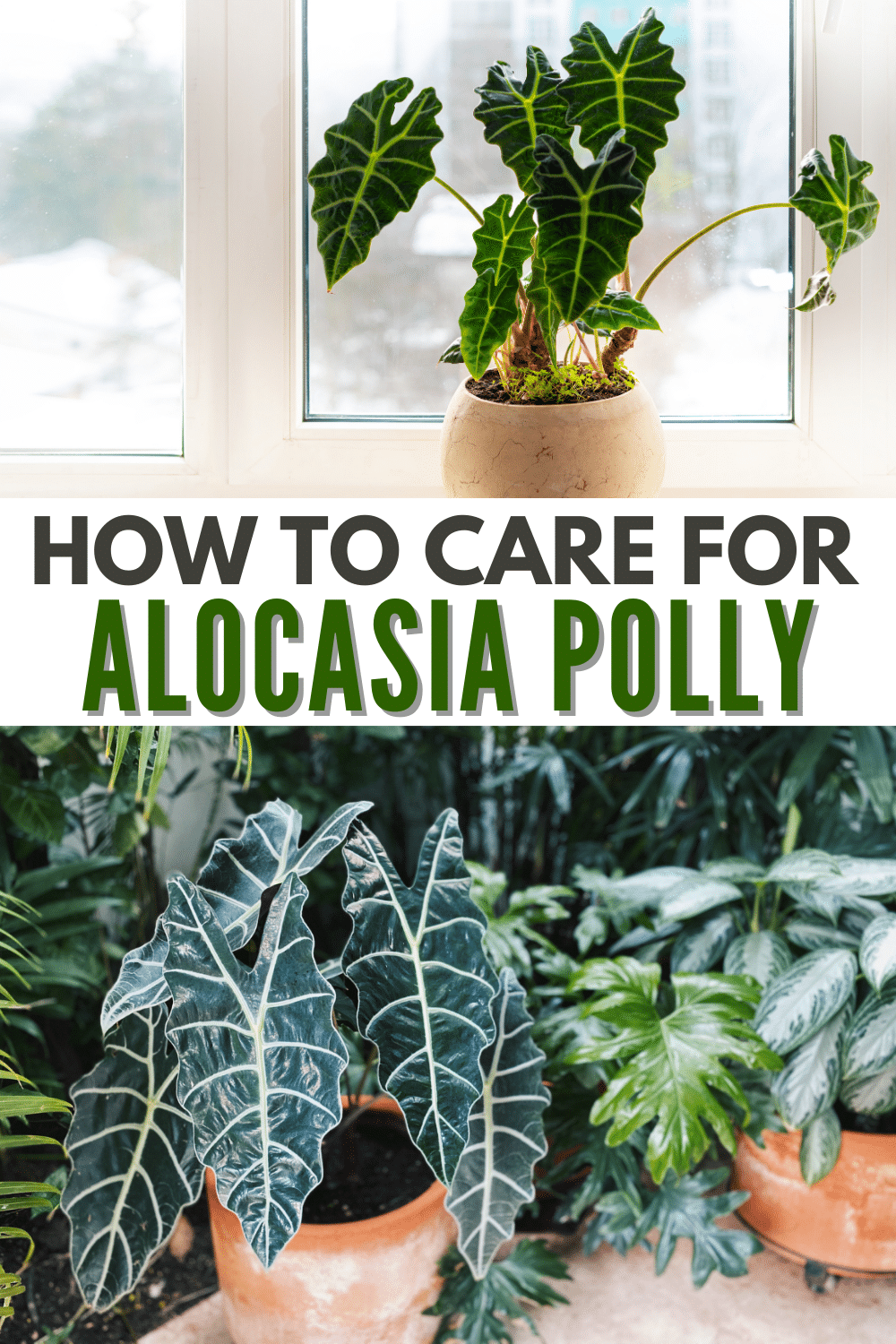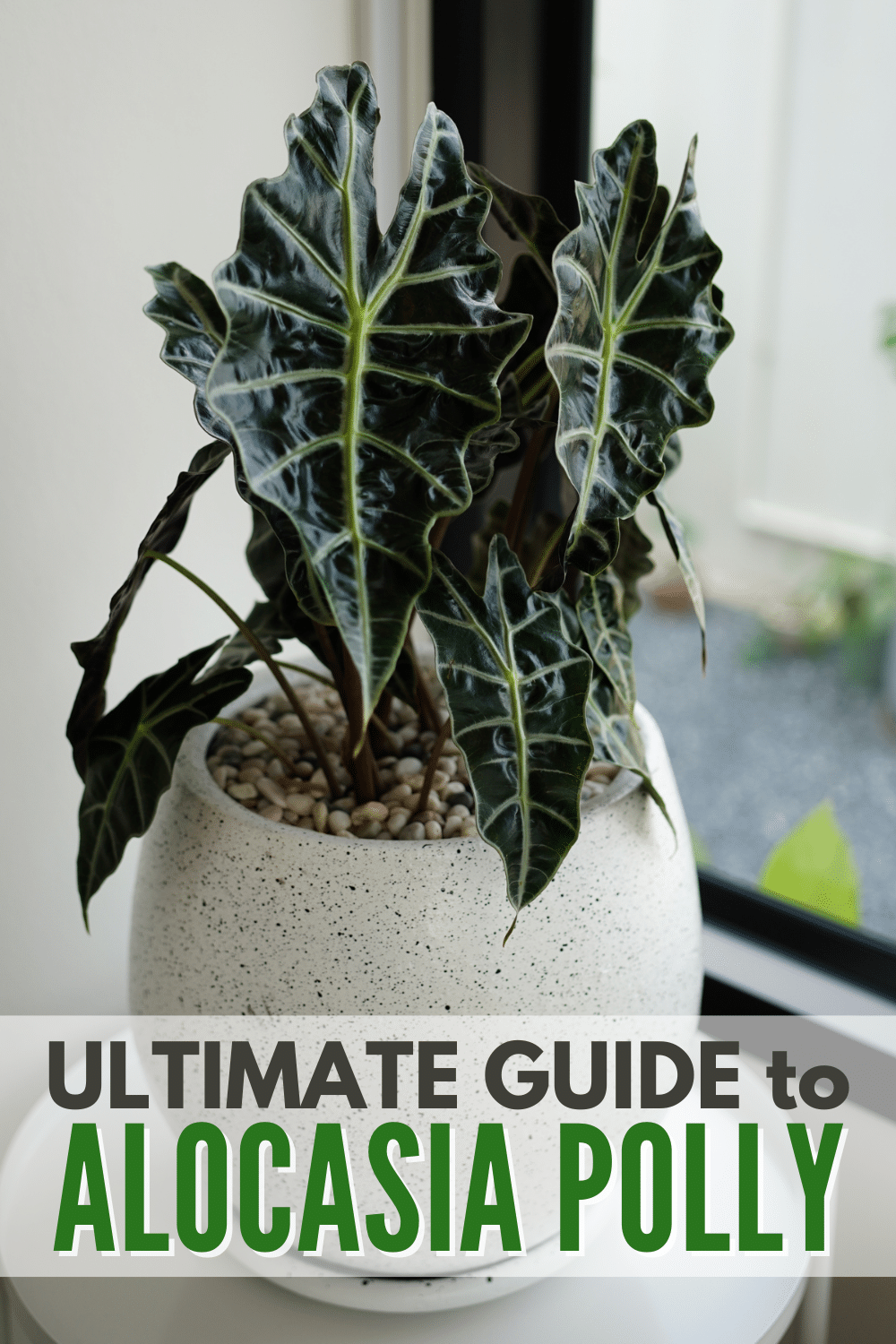Looking to add stunning tropical plants to your home? Why not consider the Alocasia Polly? Its striking leaves easily add beauty to any living space, impressing plant lovers and non-plant lovers alike. It’s a versatile plant that you can use as home decor in different ways.
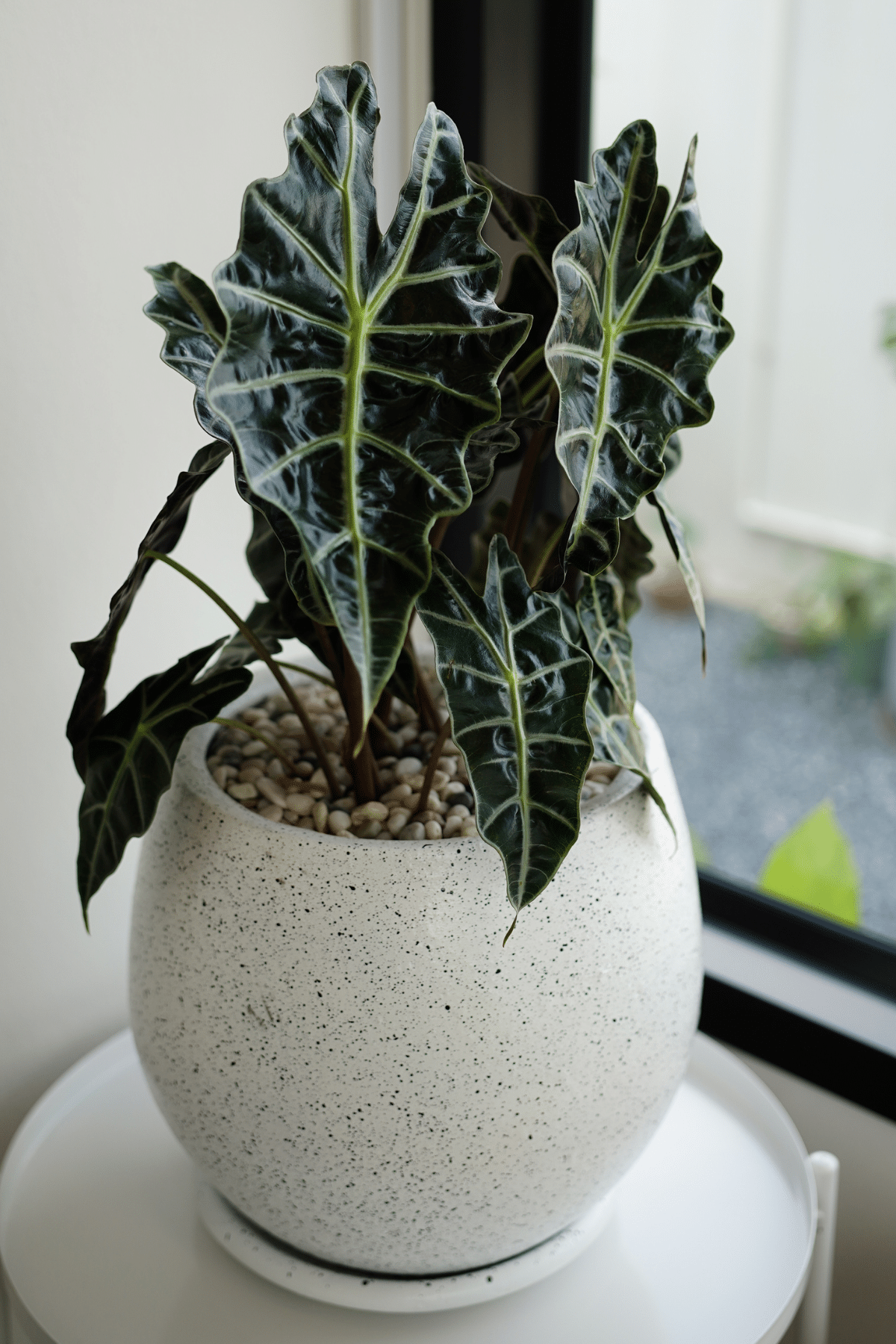
While helping it grow can be challenging, this plant will thrive with just the right know-how. Curious about this stunning tropical Alocasia Polly? Learn more about this incredible and unique tropical plant below.
Jump to:
What is Alocasia Polly?
Alocasia Polly is an elegant tropical plant that many plant enthusiasts worldwide clamor to get. Some people also call it Alocasia amazonica or African mask plant. Most people use it as an ornamental plant, thanks to its bold-looking foliage.
Like most varieties in the Alocasia family, this stunner is natively found in the tropical rainforests of South Asia, Southeast Asia, and South China. You can also find it in the South Pacific Islands.
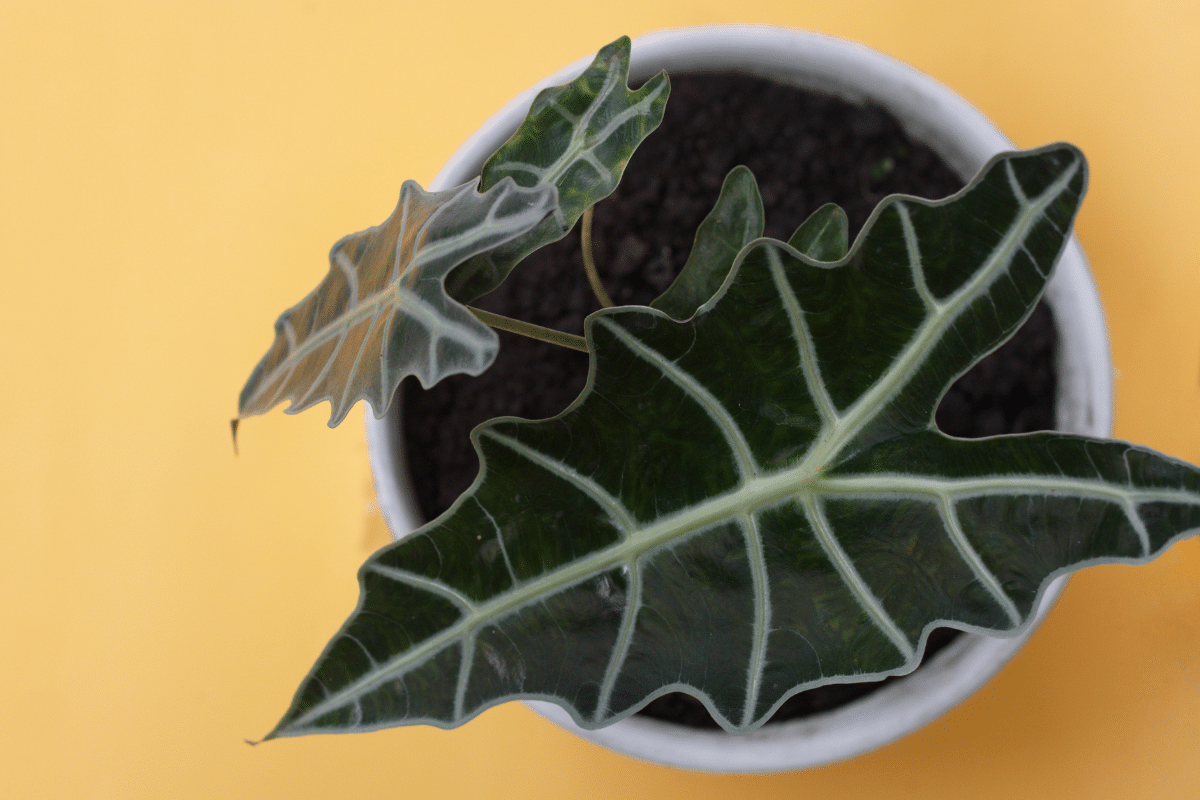
Because of its bold features, it’s a snap to recognize the Alocasia Polly from other plants. It has bold, dark green leaves that have white veins. Its large leaves are usually green and arrow-shaped, with a glossy finish. Describing it as dramatic is an understatement!
Many plant lovers and homemakers (myself included) see it as a prime choice for a decorative indoor houseplant. It can brighten up a room and create a more pleasant dwelling space. It would look great next to a Croton Petra or any of these beautiful purple house plants.
Alocasia Polly Care Guide
Fair warning: this gorgeous plant is not easy to take care of. It’s not a plant for beginners, but don’t worry though, it is not too difficult either. Besides, the effort you put into it is well worth it because of its awe-inspiring beauty. You just need to know its needs to help it thrive.
Still find it daunting? I got you, momma! Here is an Alocasia Polly plant care guide that will come in handy.
Lighting
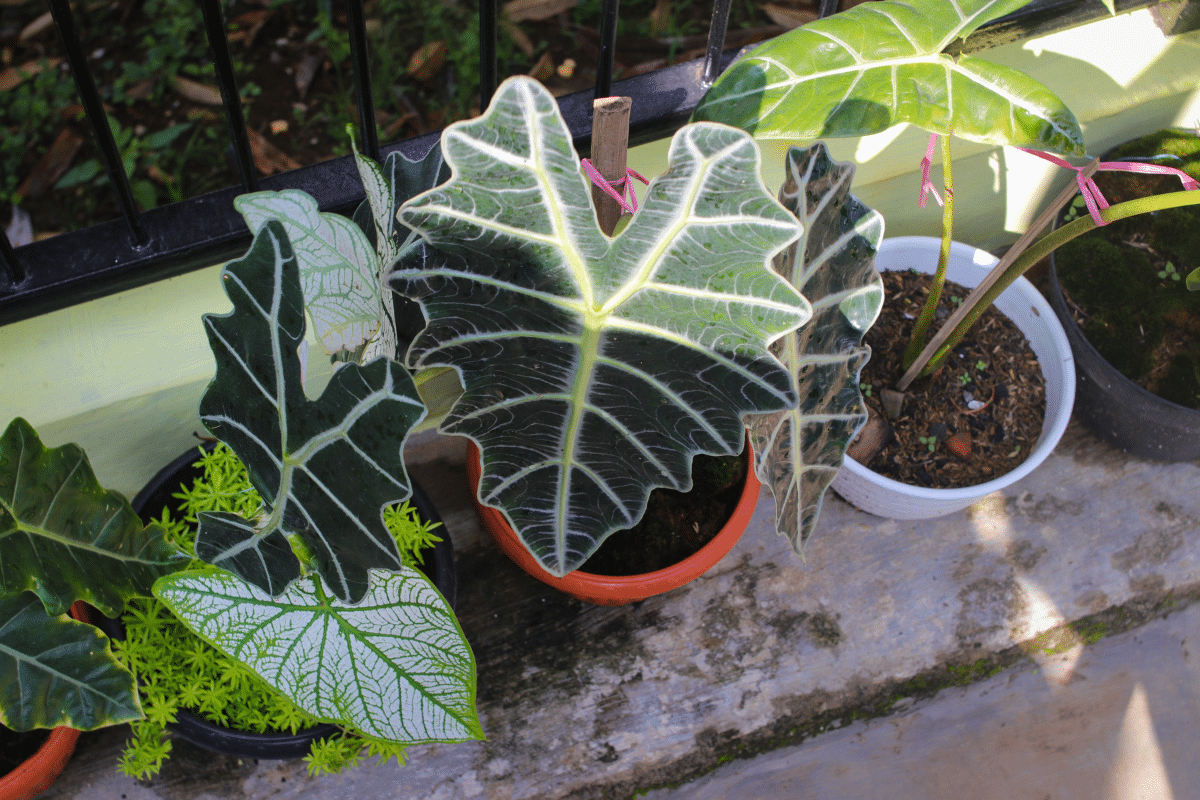
When it comes to lighting, this Alocasia Polly needs bright but indirect light. If you put it under full sun, you might scorch or burn the leaves. You can tell if the plant is scorched if you find brown leaf tips and edges that are brittle or, for lack of a better word, crispy. For best results, keep the plant where it gets plenty of light without being directly under sunlight.
Water
Since the Alocasia Polly plant is native to tropical rainforests, it loves a moist environment. So, to copy its native home, keep the soil moist. If you need an easy tell on when to water this houseplant, water it if the top layer of the soil is already dry to the touch.
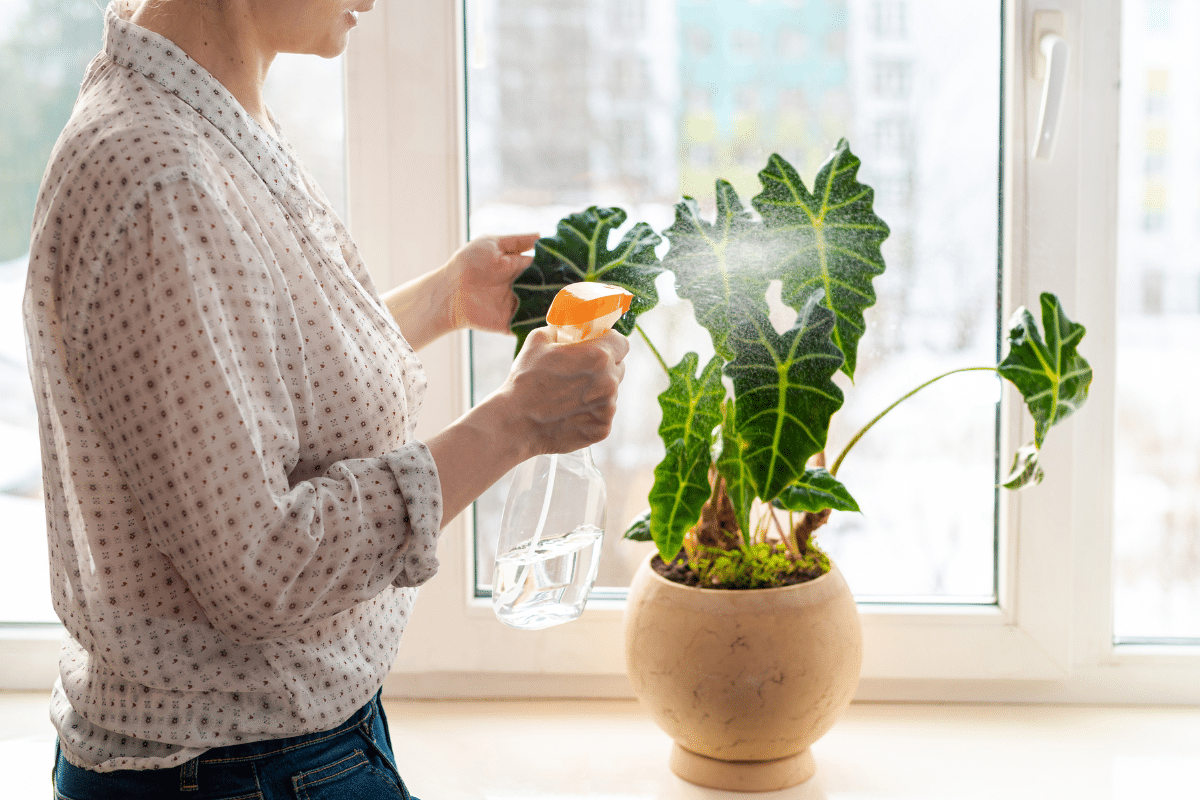
Do keep in mind that you should avoid overwatering this plant. Your gorgeous Alocasia Polly may develop root rot if the soil is too wet. This nasty plant condition happens if your plants’ roots sit in water for too long. It’s something that spreads quickly and may cause the death of your plant.
Humidity
High humidity for the Alocasia Polly is a must! If the air in your home doesn’t have enough humidity for this plant, place a humidifier near it. If you don’t have a humidifier, don’t worry! You can instead place a tray of water near your plant. You can even use an atomizer spray to mist the leaves with water.
Soil
When it comes to soil, the indoor Alocasia Polly grows incredibly in well-draining soil that should be jam-packed with nutrients. Mix sand, pearlite, and peat moss for your potting soil for the best results.
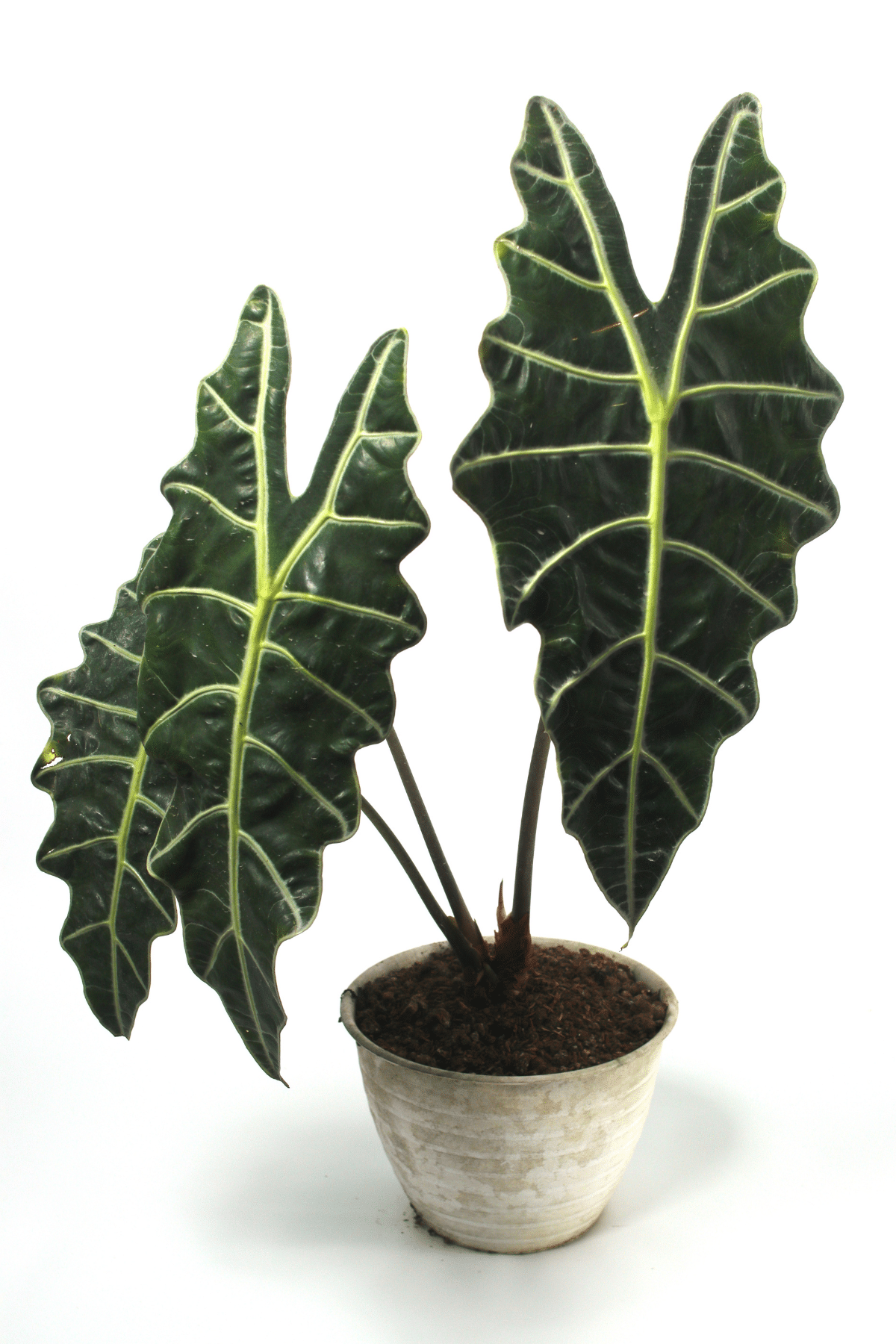
Temperature
Since this is a tropical plant we’re talking about, it loves warm temperatures. It thrives in temperatures ranging from 60°F to 80°F. Avoid placing your plant in rooms under 50°F, though, as the cold temperature may damage its leaves.
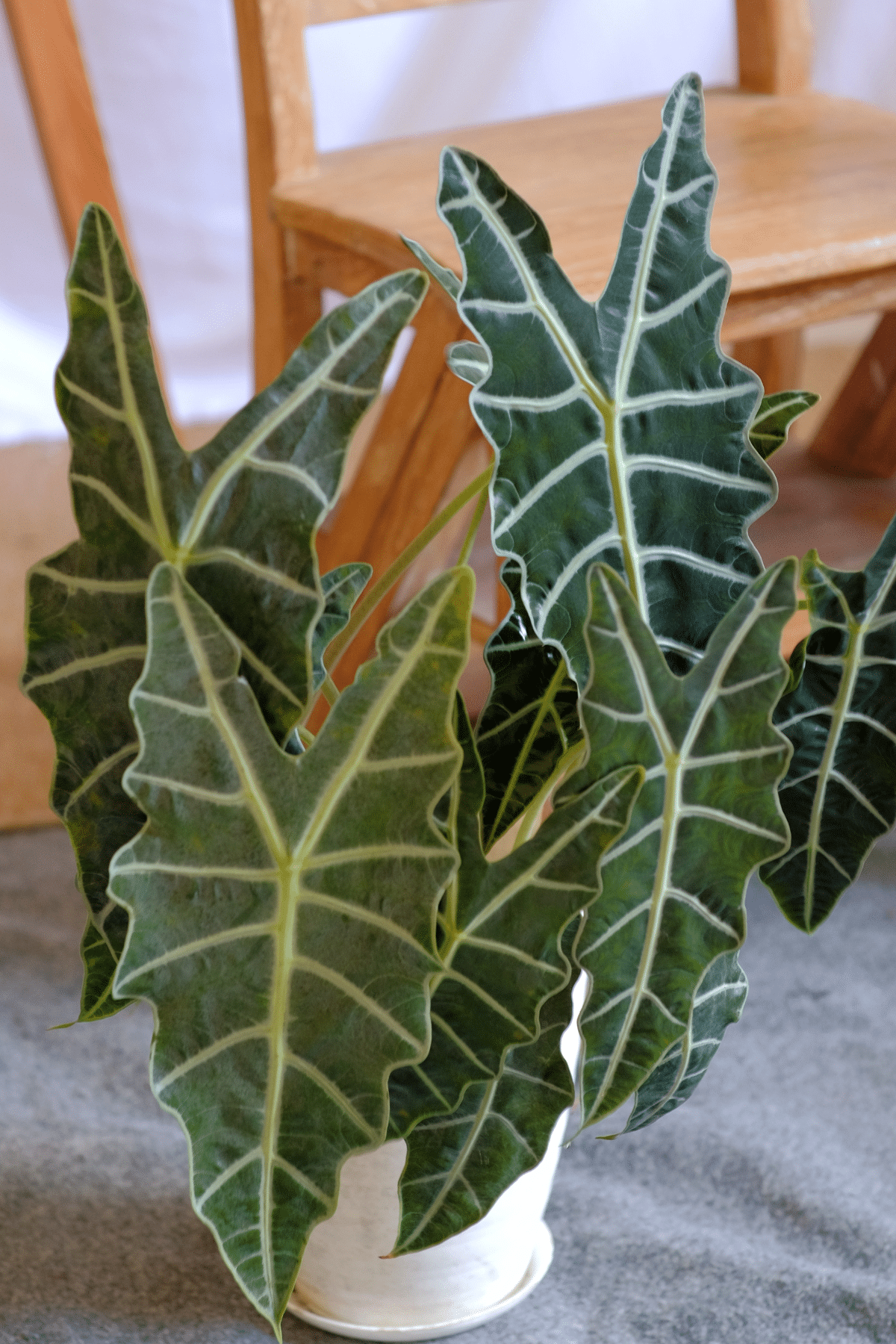
Fertilizer
Applying houseplant fertilizer to your soil is unnecessary, especially if your soil is already full of nutrients. But if you want your Alocasia Polly to thrive, you may feed it fertilizer to help it grow.
Pruning
This plant doesn’t need too much pruning. After all, why would you want to get rid of its beautiful, unique foliage? However, for the best look, you can remove any yellow leaves or damaged leaves to help your plant maintain its overall health.
Alocasia Polly Problems: Common Pests and Diseases
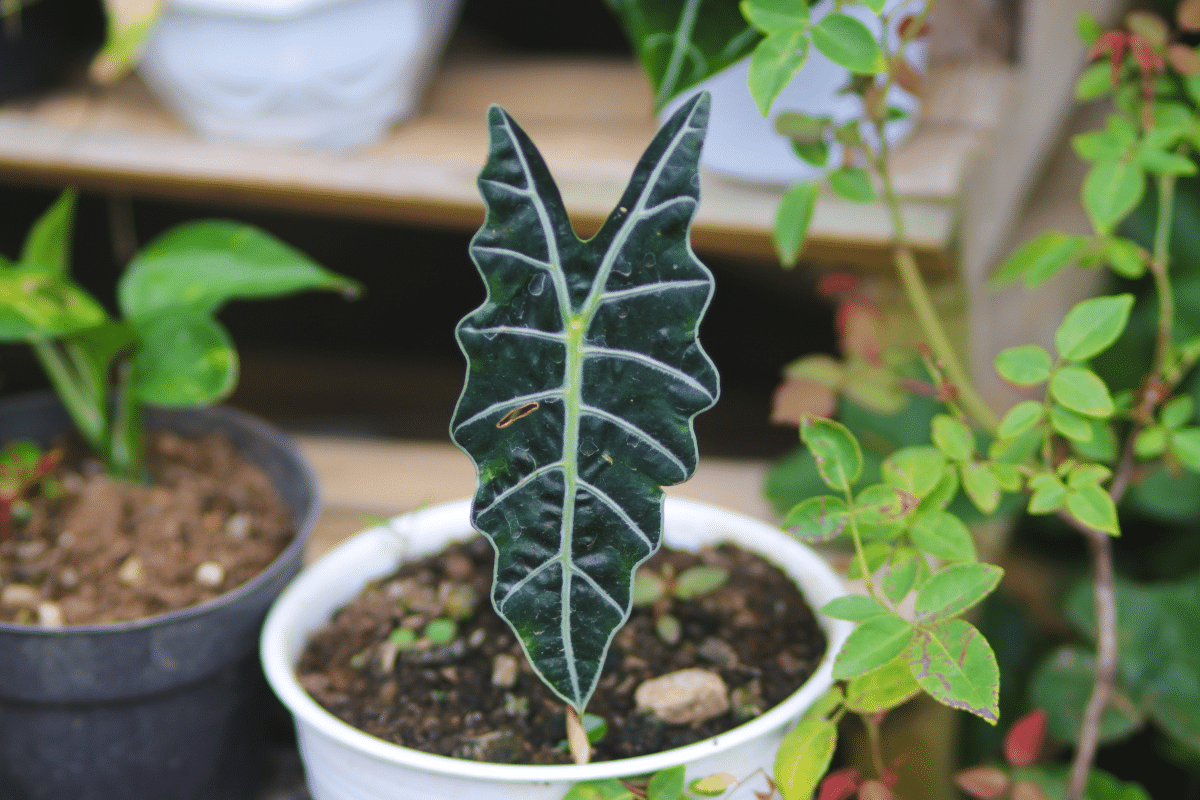
The Alocasia amazonica is not completely immune to pests and diseases. You might see little critters here and there from time to time. But, do not panic if you see pests in your Alocasia Polly! You can keep your Alocasia Polly healthy with a clear head and the right information to prevent these issues.
Pests
Spider Mites
Spider mites are notorious for damaging the Alocasia amazonica Polly plant. It’s a small parasite that likes to drink sap from your plant’s leaves, turning the leaves yellow. So if you find yellow leaves on your Alocasia plant, it’s one sign that spider mites might live in your indoor plants. Another easy tell is finding webby structures under the leaves.
Wondering how you can prevent this? You just need to keep it well-hydrated and mist it regularly.
Mealybugs
If you’re caring for an Alocasia Polly, mealybugs are a nasty sight to see. These small, annoying insects also feed on the sap from the leaves. But apart from turning the leaves yellow, they can also damage your plant enough to stunt them.
Mealybug infestations spread fast, and you’ll be in bigger trouble if you don’t get rid of them ASAP. Washing the leaves with diluted mild soap is one way to eliminate them. You can also remove mealybugs using a cotton swab soaked in rubbing alcohol.
Diseases
Root Rot
Root Rot is the bane of many plant lovers anywhere in the world. Sadly, Alocasia Polly is prone to getting it. It’s not caused by any bacteria or pathogen in the soil. Instead, any plant could get this if its roots sit in water for too long. Watering your Alocasia plant too much or having poor soil drainage puts it at risk for root rot.
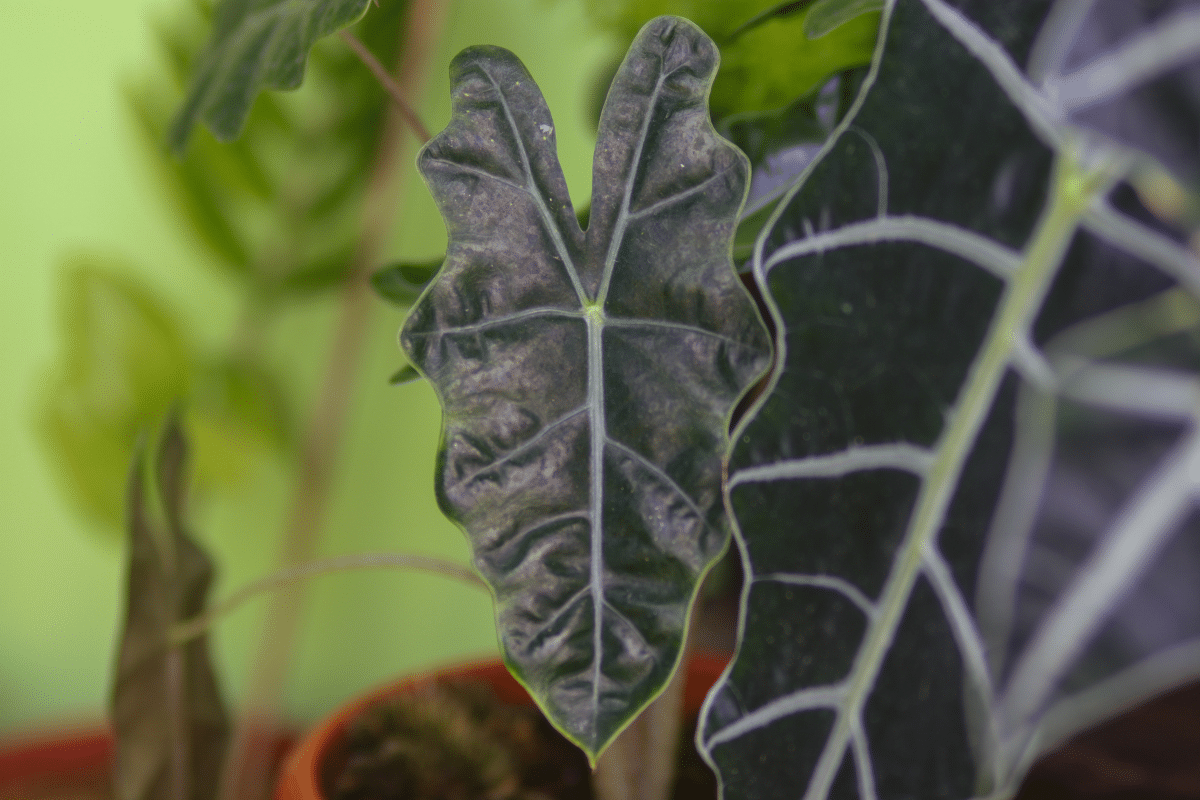
This plant issue can lead to decay, especially if you don’t catch it early enough. Some signs of root rot you should be wary of, include wilted leaves and a stinky odor coming from the soil.
With the right care, it’s easy to avoid. You just need to know when to stop watering. You’ll also have an easier time by using well-draining soil and a pot with a drainage hole.
Leaf Spots
Sometimes, you may notice unsightly black or brown spots on the leaves of your otherwise pretty Alocasia plant. These are usually caused by fungi or bacteria – both can be found in water. They’re easy to prevent, though. All you need to do is steer clear of overhead watering. Keeping your plant clean and pruning affected leaves can also stop the spread.
How to Propagate Alocasia Amazonica
Want to propagate Alocasia Polly? You’re in luck; this can be done in a jiffy. You can do this by dividing, separating healthy offshoot bulbs from the mother plant and helping them mature as individual plants.
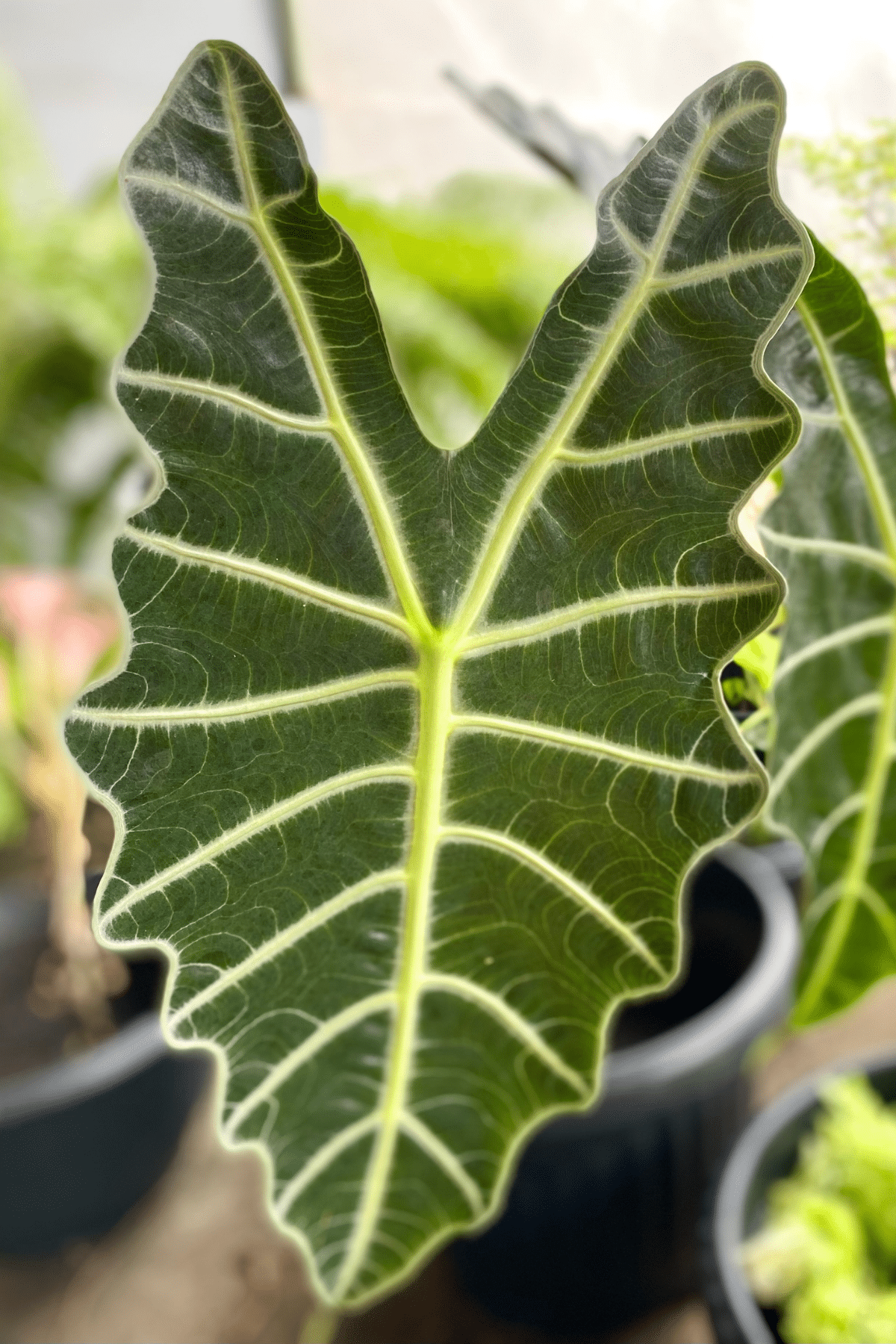
To make sure your Alocasia propagation will succeed, follow these steps:
- Choose a healthy, mature Alocasia as your mother plant. It should be a good size and free of pests or diseases.
- Remove your mother plant from its pot. Handle it with care so that you don’t damage any roots.
- After removing the mother plant from its pot, use your hands to loosen up the soil. You should do this carefully.
- It’s time to look for the offshoots! Alocasia Polly is a rhizome, a plant that grows from an underground stem or bulb, like a potato. The offshoots are easy to spot after loosening the soil.
- Separate the smaller bulbs from each other, and detangle their roots carefully. If that’s too hard to do, slicing around the plant may help.
- Repot your Alocasia bulbs in fresh soil. Use well-draining soil to help your plant grow well.
- Place your baby Alocasia plants in an area with much light, but don’t put them under direct sun.
Fun Ways to Decorate With Alocasia Polly
Alocasia Polly easily livens up a room by bringing in the exotic beauty of the tropics. It’s quite versatile, too, as you can decorate with it in many different ways. So, if you’re looking for ideas on where you can use this plant, here are some fun suggestions.
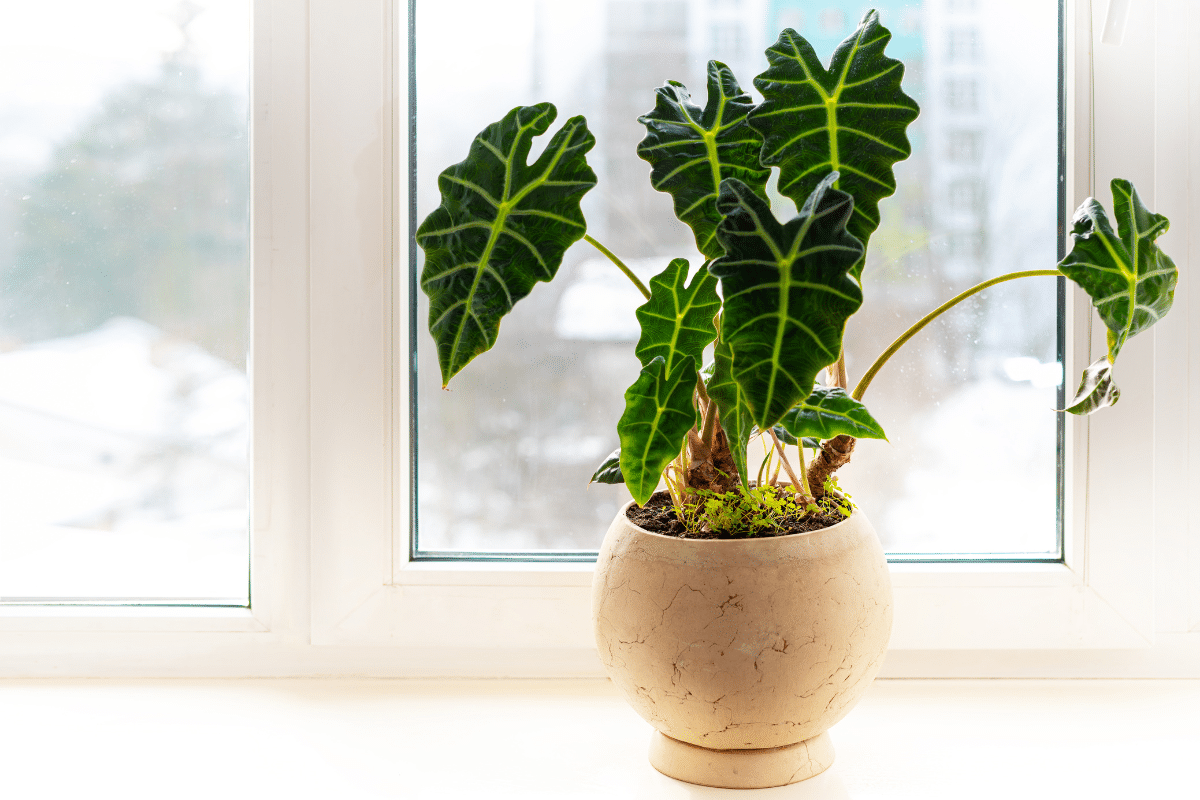
- It’s the star of the show, so make it stand out! A great way to show off this Alocasia plant is by using flashy or colorful pots. You can also put it on a fun pedestal.
- Make everything cohesive. Use complementary plants around it so that the space makes sense. If you intend to make it the focus of your room, use complementary plants that allow it to stand out. Coleus and Begonias are two good choices.
- Hang it up. Even if you don’t have much floor space, you don’t have to miss out on having an African mask plant in your collection. A wonderful way to add it to a small space is by using hanging planters. Make them stand out by getting hanging baskets and planters with interesting designs.
- Add your Alocasia to a tropical terrarium. Lively, thriving terrariums are always impressive, making it a good place to add your Alocasia Polly. Create a mini jungle in your room and surround this plant with bromeliads, ferns, and mosses.
FAQs
That will ultimately depend on you and the kind of pet you have. Alocasia Polly is toxic to cats and dogs. However, if you can guarantee that your furry pals cannot go near it, then you can definitely take care of this plant.
Definitely. The African mask plant can thrive outdoors. Just make sure you don’t plant it under direct light from the sun.
On average, your Alocasia Polly can live up to five years. It’s fast-growing, so it reaches maturity in just 1 to 2 years.
A Plant Lover’s Must-Have
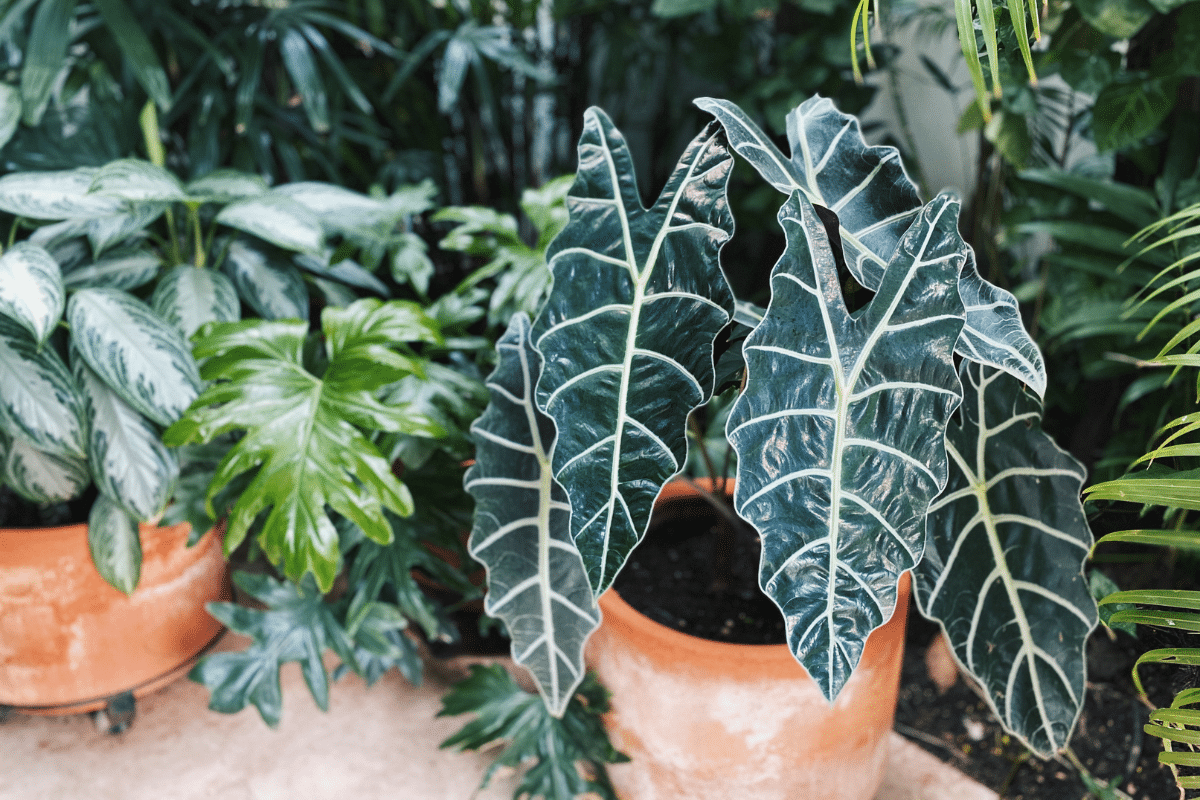
If you want to impress guests with a unique plant collection, adding the Alocasia Polly is a must. Big, bold leaves with contrasting veins easily turns heads in a well-decorated room! Yes, it’s challenging to take care of, but the effort you put in is rewarded with a beautiful plant that brings an exotic, tropical rainforest vibe to the comfort of your home. I know you can do a good job with it!

